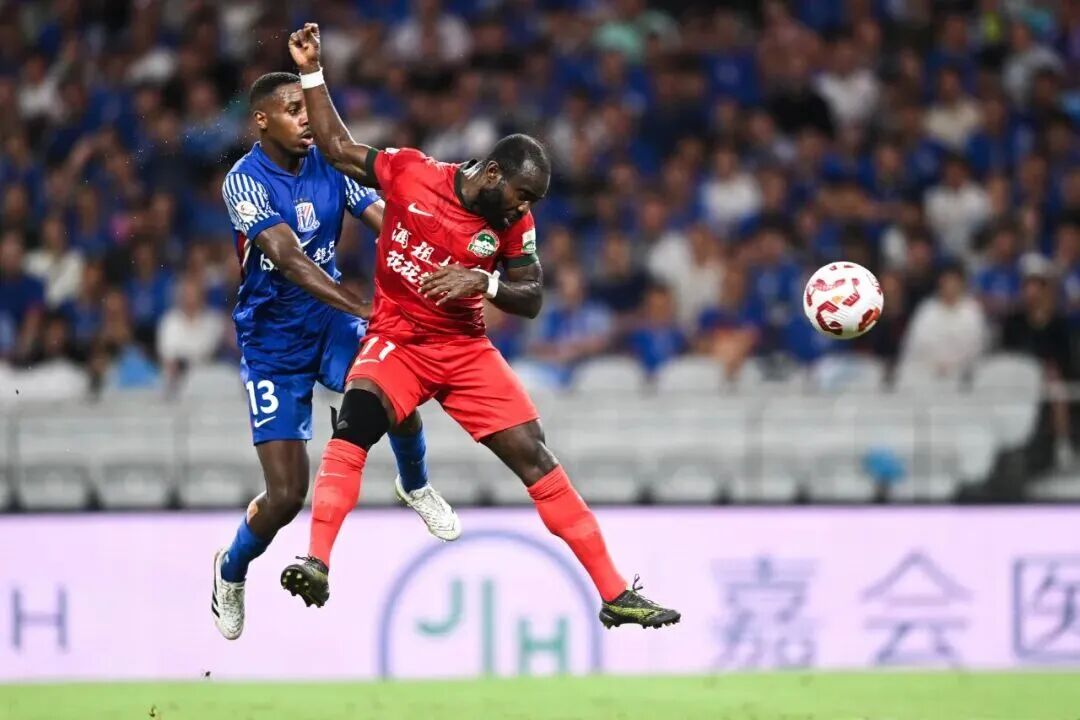2025 CSL Foreign Player Analysis: Competing in Quantity, Quality, and Stability

Written by Han Bing The Chinese Super League has again paused for a break, with the championship and relegation situations remaining tightly contested. The only definite factor under the five-foreign-player regulation is that the team able to fully utilize both the number and strength of its foreign players will hold the initiative in competition.
Although all 16 CSL teams registered five foreign players at the beginning of the season, the actual usage differs dramatically (this article’s data is up to Round 25). This season, due to injuries, suspensions, poor form, and mid-season foreign player replacements, the use of foreign players across the 16 teams varies widely. Whether competing for the title or fighting relegation, the deployment of foreign players largely determines each team’s performance.
This directly shows that in today’s CSL, whether aiming for the championship, Asian competition qualification, or survival, foreign players remain crucial. The gap in foreign player quality among title contenders, mid-table, and relegation-threatened teams has significantly narrowed. How to keep the foreign player roster as full as possible, optimize their form, and even use mid-season transfers to precisely address weaknesses will largely decide each team’s final standing within their tier.


By Round 25, starting five foreign players simultaneously occurred only 105 times, accounting for just 26.5% of all 396 starting lineups in 25 rounds. Henan leads with 14 such lineups, followed by Tianjin Jinmen Tiger (12), Shandong Taishan (11), Wuhan Three Towns (11), Shanghai Port (10), and Qingdao West Coast (10). Among the title contenders, Beijing Guoan (6), Shanghai Shenhua (3), and Chengdu Rongcheng (1) lag far behind Shanghai Port, who recently reclaimed the top spot.
Compared to lineups with five foreign starters, four foreign players starting is the most common formation in CSL teams. Across 25 rounds, lineups with four foreign starters appeared 172 times, making up 43.4%. Three foreign starters occurred 87 times, two foreign starters 29 times, and no foreign starters only 3 times. Shanghai Port started at least four foreign players in all 25 matches, followed by Henan (24), Shandong Taishan (22), Qingdao West Coast (22), Tianjin Jinmen Tiger (21), and Wuhan Three Towns (21). Among title contenders, Chengdu Rongcheng, Beijing Guoan (17), and Shanghai Shenhua (14) fall far behind Shanghai Port. Zhejiang used four foreign starters the least, only twice in 25 rounds; Changchun Yatai used four foreign starters 11 times, ranking second to last.

The number of foreign starters correlates positively with most CSL teams’ winning percentages. In 25 rounds, the 16 teams won 111 matches starting with four foreign players, accounting for 74.5% of all wins. Shanghai Port (16 wins), Henan (8), Qingdao West Coast (7), and Meizhou Hakka (4) won all their matches with at least four foreign starters. Tianjin Jinmen Tiger recorded the most wins with five foreign starters (7), followed by Shanghai Port (6), Shandong Taishan (6), and Henan (5). Among teams with at least five foreign starter appearances, Shanghai Port had the highest win rate (60%), followed by Tianjin Jinmen Tiger (58.3%) and Shandong Taishan (54.5%). Zhejiang and Qingdao Hainiu failed to win any matches starting five foreign players; Zhejiang had one draw, Qingdao Hainiu two draws and one loss.
In the first 25 rounds, teams starting four or more foreign players had a win rate as high as 39.8%, whereas among 119 lineups with three or fewer foreign starters, the 16 teams only won 38 matches, dropping the win rate to 31.9%. For matches starting two foreign players, the difference in wins and win rates between the top eight and bottom eight teams was significant. The top eight had 18 such matches with 7 wins; the bottom eight had 11 such matches but only 1 win. This large gap corresponds to the disparity in foreign and domestic player quality between the upper and lower halves. In the 3 matches with zero foreign starters, the result was 2 draws and 1 loss, no wins.


This season, as the foreign player strength among title contenders becomes more even and competition intensifies, the contest is no longer about the individual ability of star foreign players but about which team can maintain a stable five-foreign-player lineup longer and keep those players’ form steady. Mid-season foreign player adjustments also play a key role. Shanghai Port leads in the stability of maintaining five foreign players. They started five foreign players 10 times and four foreign players 15 times, never fewer than four starters in the first 25 rounds. Although they deregistered Gustavo during the second transfer window, Wu Lei’s former Spanish teammate Melendo’s arrival replenished both the quantity and quality of foreign players.
Although Shanghai Port’s foreign player strength has declined compared to last year, especially in midfield creativity, the relatively consistent availability of foreign players across all three lines has greatly mitigated the impact of individual ability and form drops. With Melendo’s arrival, Leonardo received more support and showed clear improvement in the second half of the season. Since late July, he has scored 8 goals and assisted twice in 8 matches, helping Port achieve a run of 5 wins, 2 draws, and 1 loss. In contrast, title rivals Shenhua and Guoan have suffered serious foreign player injuries, shifting momentum in the title race during the final sprint.
In contrast, Shanghai Shenhua, originally Shanghai Port’s biggest title rival, has been severely affected by foreign player injuries. Amadou suffered a knee ACL injury early in the season and missed over three months, only returning to the starting lineup in early August. Then, Minero, who scored 8 goals and assisted 7 times in 14 matches with an average of involvement in one goal per game, was seriously injured and out for the rest of the season. Newly signed Asue scored in consecutive games initially but then went through a seven-match goal drought; during this period, Shenhua only managed 1 win, 4 draws, and 2 losses, losing control of the title race. Forward Andre Luis is sidelined for six weeks, likely returning only by late October, further complicating Shenhua’s title hopes.

Beijing Guoan faces similar issues. Key center-back Spajić tore his ACL, causing a severe defensive crisis for the mid-season champions in the league’s second half. Meanwhile, foreign defender Ngadeu missed up to 7 matches, and his form and stability cannot compare to the defensive foreign player combinations of Port and Rongcheng.
Beyond defense, Guoan’s foreign players in midfield and attack have also underperformed compared to Rongcheng and Port. Dawan, Gu Gai, and naturalized player Serginho have not met expectations. Although Fabio scored a fair number of goals, the team lacks more effective attacking options. Among the title contenders, Guoan’s five-foreign-player lineup has been most affected by injuries and form issues, making them the first to fall behind the leading group.
For CSL title contenders, the stability of the five-foreign-player lineup is the most critical competitive advantage. Clearly, Port and Rongcheng excel in consistently starting at least four foreign players. Injuries, unstable form, and ineffective mid-season foreign player adjustments have further weakened Shenhua and Guoan’s competitiveness. The CSL championship is likely still decided by foreign player deployment.


In maximizing the five-foreign-player quota, CSL teams in the lower and mid-table, especially those fighting relegation, depend even more heavily on foreign players. Through 25 rounds, Henan ranks second with 24 matches starting four or more foreign players, followed by Qingdao West Coast (23) and Wuhan Three Towns (21). The four teams facing the toughest relegation battles have fewer such lineups—Meizhou Hakka leads with 19, followed by Qingdao Hainiu (17), Shenzhen Pengcheng (15), and Changchun Yatai (11). Changchun Yatai even had four matches starting only two foreign players—the highest in the bottom half—indicating serious underuse of foreign players.
How much does the number of foreign starters affect lower-half teams? Taking matches with three or fewer foreign starters as an example, the bottom eight teams played 52 such matches, with 8 wins, 8 draws, and 36 losses—a loss rate of 69% and win rate of only 15.4%. Among them, Meizhou Hakka (5 matches), Qingdao West Coast (2), and Henan (1) combined for 8 matches with just 1 draw and 7 losses, a zero win rate. For lineups with four or more foreign starters, across 145 matches, there were 38 wins, 39 draws, and 68 losses, reducing the loss rate to under 49% and increasing the win rate to 26.2%.
All 8 wins by Henan, all 7 wins by Qingdao West Coast, and all 4 wins by Meizhou Hakka in the first 25 rounds came from starting lineups with at least four foreign players. This highlights the importance of the number of foreign starters for relegation-threatened teams. Changchun Yatai managed only 4 wins in 25 rounds; their two victories over Meizhou Hakka both featured at least four foreign starters. Their win against Shenzhen Pengcheng, although with three foreign starters, benefited from home advantage and the opponent’s key player injuries and forced substitutions.

Besides foreign player quantity, injuries, suspensions, form, and mid-season foreign player changes are also crucial for relegation battles. Henan performed poorly before changing coaches, with former coach Nan Ji Yi’s poor personnel decisions partly to blame. His lack of trust in Cardoso and poor relationship with Achim Peng directly limited the team’s potential. After Ramos took over and switched to a 4-2-3-1 formation, Achim Peng and Cardoso were supported by Nasario behind them. Henan is one of the few relegation teams that did not change foreign players in the second transfer window but earned 13 points in the last 6 rounds with 4 wins, 1 draw, and 1 loss. In Round 25 away at Wuhan Three Towns, three foreign players scored all five goals. Under new coach Ramos, foreign players’ form collectively improved, helping Henan escape relegation early despite being near the drop zone in the first half. Achim Peng scored 11 goals and assisted 3 times in the last 13 matches, compared to just 2 goals and 1 assist in the previous 12. Cardoso and Nasario’s form also improved around the same time.
New signings have varied impacts. Qingdao Hainiu’s Cameroonian striker Rankelze scored 4 goals and assisted 2 in the last 5 matches, also activating Silva and Augusto’s attacking potential. Camilo contributed to goals in three consecutive matches in August, helping Changchun Yatai secure a crucial 6 points at home against relegation rivals Meizhou Hakka and Shenzhen Pengcheng. In contrast, Shenzhen’s Wesley has been somewhat isolated but still scored 9 goals—an impressive figure that accounts for nearly 70% of the team’s total goals, as other foreign teammates have offered limited support.
For CSL relegation-threatened teams, besides fully utilizing the five foreign player quota, adjusting tactics to boost foreign players’ form and replacing key foreign players is also essential. This complete reliance on foreign players’ performance is the survival rule for teams fighting relegation in the CSL.











 Links
Links
 Contact
Contact
 App
App


